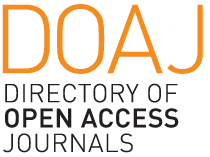Factors explaining the differences in the adoption of circular economy measures among farms in Southwest Finland
Keywords:
agriculture, byproducts, fertilization, nutrient management, statistical analysisAbstract
Transitioning to a circular economy is essential for addressing the inefficiencies and environmental impacts of traditional agricultural practices that rely on synthetic fertilizers and fossil resources. These conventional methods degrade soil, increase greenhouse gas emissions, and pollute waterways through nutrient runoff. A circular economy enhances sustainability by minimizing waste, optimizing resource use, and recycling nutrients. This study analyzes the adoption of circular economy practices among farms in Southwest Finland and identifies influencing factors. A survey distributed to farmers measured the extent of circular practices and the challenges faced. Cross-tabulations and logistic regression analyses evaluated how farm characteristics and farmer attitudes impact implementation. Results show a slow and variable transition among farms. About 50% of respondents have reduced mineral fertilizer use, although trading in byproducts and especially on-farm energy production from byproducts remains uncommon. Many farmers highlight insufficient policy support. The study concludes that policy interventions, training, and education are essential to accelerate adoption and stresses the importance of tailored, regional decision-making for effective policy development.
Downloads
How to Cite
Copyright (c) 2025 Antti Hynni, Jukka Käyhkö, Tuomas Kuhmonen

This work is licensed under a Creative Commons Attribution 4.0 International License.
Accepted 2025-01-14
Published 2025-02-05









